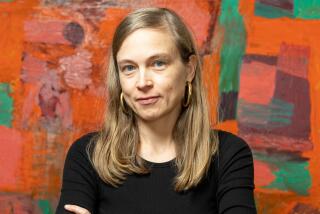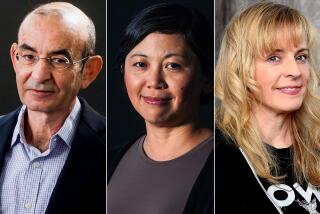Off The Shelf: The day Hemingway’s Nobel Prize came out of hiding
Last year, the Swedish Academy awarded the Nobel Prize in Literature to the French author Jean-Marie Gustave Le Clézio. The prize has been handed out annually, with the exception of the World War II years, since 1901, when French poet René F.A. Sully-Prudhomme won the first. Irish winners have included William Butler Yeats (1923) and George Bernard Shaw (1925); Latin America counts Pablo Neruda (1971) and Gabriel García Márquez (1982) among its laureates. America’s 11 winners include William Faulkner (1949), John Steinbeck (1962) and Toni Morrison (1993). It may surprise you, then, to know that I myself received a Nobel Prize in Literature. No one was more startled than me.
A good while back an online travel/adventure magazine called Mungo Park sent me to Cuba to prepare a series of reports under the general heading “Hemingway in Havana.” Now defunct, Mungo Park -- named for a Scottish explorer from two centuries ago -- was owned by Microsoft and operated from the corporate campus in Redmond, Wash. The series of dispatches I was to post daily would conclude with reports from Mariel Hemingway, the actress who was born some 20 weeks after her grandfather’s death. She was flown in for the occasion along with her husband, Stephen Crisman, who was shooting footage of her for a documentary film.
I had considerable experience on the island, and made the best preparations I could, given Cuba’s perennial suspicion of foreign electronic media. The country was just then emerging from its “special period in a time of peace,” a euphemism for the economic free fall following the Soviet Union’s implosion. Microsoft’s reputation helped enormously as I arranged logistics along Cuba’s informally dubbed “Hemingway Trail.”
“Will Bill Gates be coming?” officials in the tourism and communications fields asked. “You never know,” I replied with a wink.
My most daunting task was to convince Cuba’s Catholic Church to take Ernest Hemingway’s 1954 Nobel Medallion out of hiding so Mariel could see it. When Ernest won the 23-karat gold medal, he wanted to give it to the people of Cuba, off whose north coast his novel “The Old Man and the Sea” is set. Rather than turn the medallion over to the Batista government, he placed it in the custody of the Catholic Church for display at the sanctuary at El Cobre, a small town outside Santiago de Cuba on the island’s southeast coast.
The sanctuary has been called the Cuban Lourdes, and remains a repository for mementos and prayers from the hopeful and hopeless. The medallion remained there until the mid-1980s when thieves broke into the glass display case and stole it. Police recovered the medal within days, but the Catholic Church decided to keep it under wraps rather than chance another theft. It was with singular pleasure, then, that I held a private meeting with Padre Pedro Palma of the Diocese of Santiago de Cuba to persuade the church to bring the medallion out of hiding for the first time since the theft.
When it came time for our series to begin, Mungo Park flew in a producer to handle the technical details and a photographer whose digital work was to be posted alongside my articles. The day we were to go online the tourism minder assigned to us had unfortunate news: We had not yet received official clearance to begin transmission. State Security -- which we later learned had a hotel room on the floor below ours -- tried to sabotage us.
Christian Kallen, the producer, took a deep breath and went to work. Instead of using our hotel’s monitored phone line to the States, he routed a line from his laptop to a Microsoft terminal in Canada, from which the stories and photos were dutifully forwarded for worldwide posting the next morning. Every day the tourism fellow forlornly told us we had not yet received clearance to transmit, and we’d nod our sad acquiescence. And every night we’d mojo the package to Canada.
Finally, Mariel arrived with her husband and two factotums who seemed to have no function other than to regale each other with tales of how to extract cash from errant ATMs. I was only too pleased to guide Hemingway and her entourage around Havana and introduce her to people and places of note, especially locations associated with her father’s father. Each time we came to such a site, I would recount the conventional wisdom about it, then explain that the popular story was at odds with the historical record.
A sign at a famous restaurant, for instance, had supposedly been autographed by Ernest Hemingway, but this was a complete invention, fabricated by tourism officials after his death. He was said to have written “For Whom the Bell Tolls” at one hotel, when in fact he wrote most of the book at another hotel where he maintained a room to escape his growing popularity. When Hemingway’s old sea captain, then 100 years old, was trotted out as the model for “The Old Man and the Sea,” I noted that, as a letter from Hemingway to his editor Maxwell Perkins reveals, the real fisherman was someone else who had died early on, leaving the way open for this new public face. Mariel’s husband grew increasingly annoyed as I punctured holes in the grand myth he had come to film. At one point, he leaned over from the back seat of our rented SUV. “Miller,” he said with irritation, “shut up.”
We chartered a plane to fly to Santiago de Cuba, and when we arrived at the sanctuary at nearby El Cobre, Padre Pedro came to the chapel to greet us. I’d like to say he slowly opened a creaking mahogany box and carefully unwrapped a fringed silk tallit to produce the medallion. But no, Hemingway’s celebrated Nobel Prize, which weighed almost half a pound, was stored in a large manila envelope.
Mariel knelt briefly and crossed herself, then received the medallion as the rest of the party watched from a distance. As interpreter, I discreetly stood a few feet back and to the side. Mariel held the precious medal, absorbing its essence. Then, as if a quarterback handing off to her halfback, she turned to her left and placed her grandfather’s medallion in my hands.
After many books, through decades of writing, I had received the most hallowed honor in my profession, the Nobel Prize.
I do not know what followed. It seemed as if a ray of light had come through stained glass and struck me dumb. There was something heavy in my hands that reflected the sun, I know, but I’m not sure if I held it for five seconds or five minutes. I recall sweating profusely and wearing a goofy grin. Mariel’s voice brought me out of the fog: “OK, Tom, that’s enough.” I handed the 1954 Nobel Prize in Literature back to her.
On our last day in Cuba, the tourism flack, utterly clueless about the previous week’s daily postings, excitedly told us we would be allowed to transmit to Redmond that evening. To make him happy, we reprogrammed the laptop and did it his way.
Miller is the author of “Trading With the Enemy: A Yankee Travels Through Castro’s Cuba” and the editor of “Travelers’ Tales: Cuba.” He has visited Cuba regularly for more than 20 years.
More to Read
The biggest entertainment stories
Get our big stories about Hollywood, film, television, music, arts, culture and more right in your inbox as soon as they publish.
You may occasionally receive promotional content from the Los Angeles Times.






